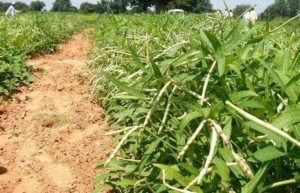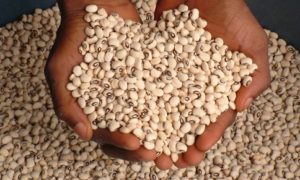Cowpea Farming – A Step by Step Guide
The following write-up details about Cowpea farming techniques, tips, ideas and cultivation practices.

Introduction and Importance of Cowpea:
Cowpea crop is a Kharif legume crop and is grown across India for seeds, green pods, animal fodder, and organic green manure.
Varieties of Cowpea:
Pusa phalguni, which is best for sowing as a summer crop, Pusa Barsati is best for rainy season crop, Pusa Dofasli is best for summer as well as the rainy season.
The Climatic condition required for Cowpea Production:
Cowpea thrives very well in warm seasons, not in cold and winter seasons. Areas, where rainfall is more than average is not suitable for Cowpea Farming. Cowpea crop requires and does well in moist weather.
Suitable Soil and It’s Preparation for Cowpea Plantation:
Cowpea can be cultivated in a wide range of soils. They do very well in sandy and sandy loam soils. You should make sure the soil is rich in organic matter, adding farmyard manure(FYM)will make the soil more fertile. The land should be prepared by giving five to six ploughings before planting the cowpea seeds.
You may be interested in reading the Cleft Grafting Steps and Procedure.
Seed rate required in growing Cowpeas:
Usually, the required seed rate is 16 to 21 kg/ha.
Selection of seeds for growing Cowpeas:
Seeds used in Cowpea farming for sowing must be having from a genuine source. You should check for hardness and diseased, immature, shrunken and deformed seeds.

Sowing season of Cowpea seeds:
The time of sowing depends on the type of crop.
- Spring season Cowpea crop: February to March.
- Kharif season Cowpea crop: May to June
- Rabi season Cowpea crop: October to November
Manures and Fertilizers of Cowpea:
5 tonnes of well-decomposed compost (Field Yard Manure ) is used in the main fields along with a basal application of 45kg urea and 120kg superphosphate per acre.
You may be interested read the Kadknath Egg Production.
Methods of Sowing for Cowpea:
The cowpea seeds are sown by the dibbling method. In layout flatbed and spacing 45 cm X 35 cm, or 70 cm X 50 cm is practiced in cowpea farming.
Weed Control in Cowpea Crop
Weeding is not needed for this cowpea crop. It covers the land very soon and kills the weeds by smoothing. Initial stages of growth, one weeding more than enough to control the weed in cowpea farming.
Water Supply for Cowpea Production
It all depends on the type of season, if it is the rainy season, no water is given for the cowpea crop, before rainy season couple of irrigations are preferred in cowpea farming.
The Harvesting of Cowpea:
The cowpea crop will be ready for harvesting in 3 to 4 months for short duration crop and 4 months to 5 months for long duration crop. tender pods should be harvested frequently before they become fibrous. The cowpea crop can be used as green fodder for animal or can make organic manure when they are bearing flowers.
The yield of Cowpea:
in Cowpea cultivation, the yield can be expected around 40 to 70 quintal green pods/ha.
The bottom line of Growing Cowpeas:
Cowpea cultivation is profitable as this can even be used for any animal fodder as well as food grain requirement.
Read: How To Grow Citronella.
Do I need to apply fertilizer on my cowpea? If yes, what type of fertilizer. What kind or brand of insecticides should I apply on my cowpea?